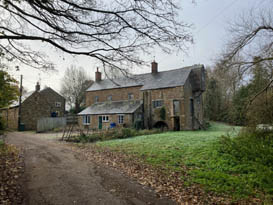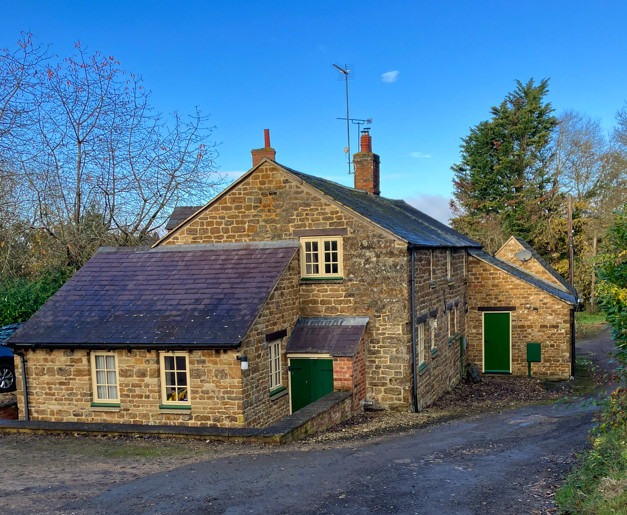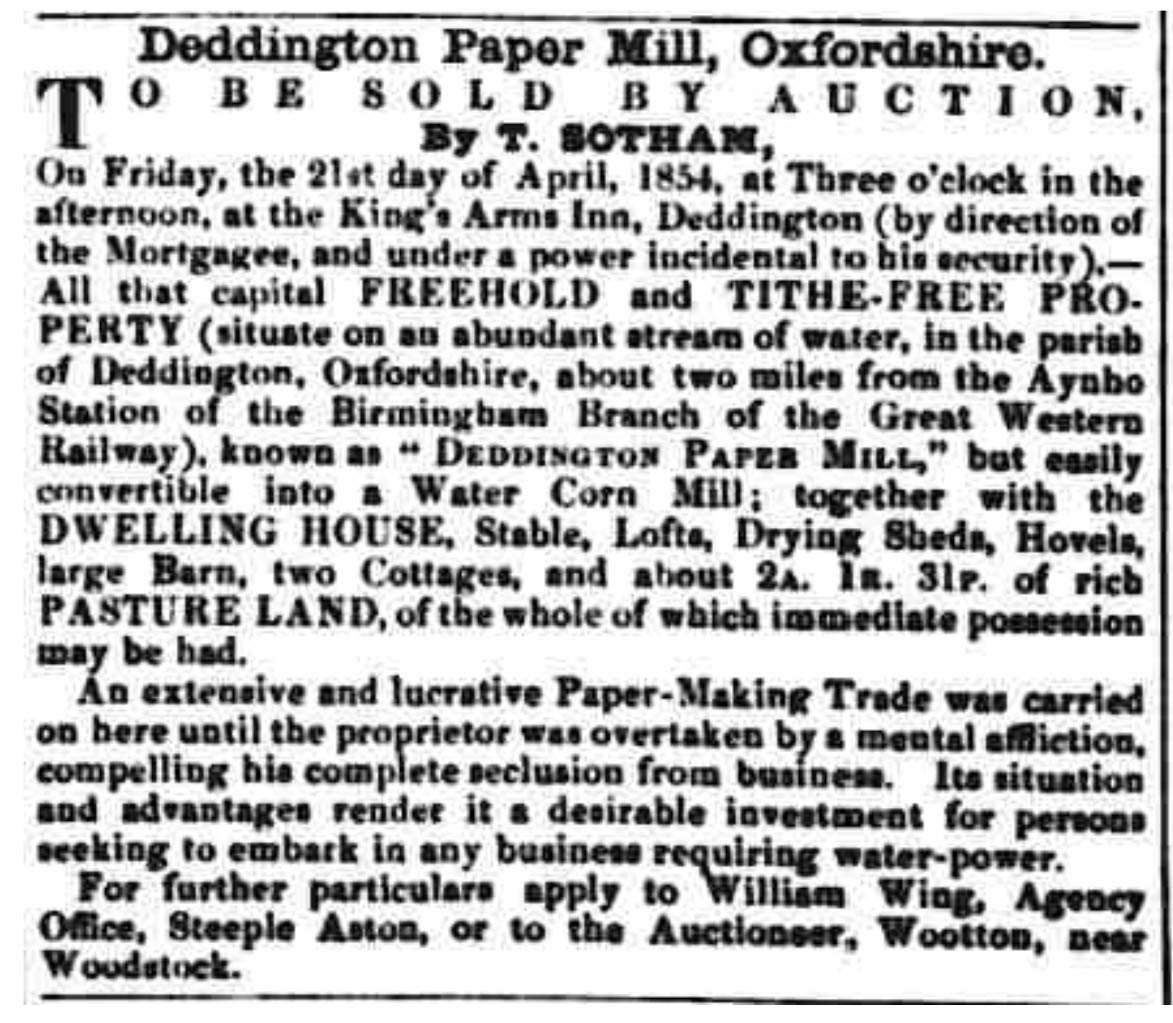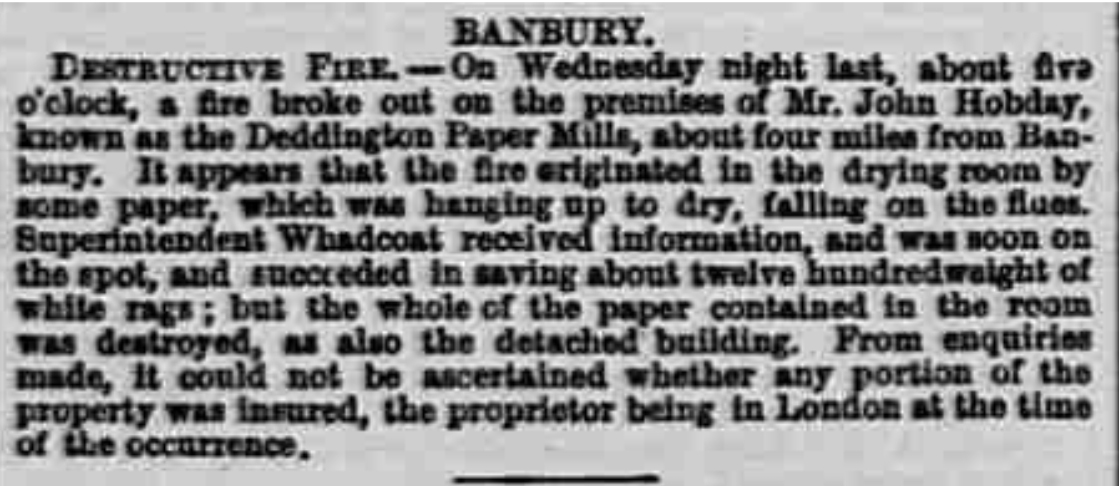Millennium Project
Rob Forsyth
The Mill (above l) & its former paper-drying and work rooms (above r) - now a cottage - is down a winding private road off the east side of the Banbury Road (A4260), passing through Adderbury Grounds Farm. There is a well recommended walking route to be followed via one of Ralph Elsley's Walks - 'Last but not least'
History
June Stilgoe of Adderbury Grounds Farm wrote the following article for Adderbury History Association in April 1983
"The bridle path off the Oxford Road at the end of Berry Hill Road is still known as Paper Mill Lane from the days when it led to a mill making watermarked paper for bank notes. A mill existed here as long ago as 1086 when it is recorded in the Domesday Book, which mentions that in the parish of Dadintone (Deddington) there were three flour mills. Although, according to the Ordnance Survey map, the mill site is just inside Deddington parish, it has always been associated with Adderbury. All that remains on the site today are Paper Mill Cottages.
The first paper was made in England probably in the 1490s, when Thomas Tate's watermark is found overprinted with Caxton's mark. Although it is known that countless small mills began producing paper from time to time, there is little information on them. However, the 1983 edition of
the Victoria History of Oxfordshire records that in 1660 Christopher Dayley of Adderbury asked leave of John Cartwright to convert the Old Mill into a paper mill. Michael Hutton of Hampton Gay made a similar proposal in 1684 and workmen were then engaged to make the conversion.
Good quality writing and bank note paper were made at the mill until 1873 according to one authority. A mineral spring produced water for pulping and this enhanced its suitability for bank note paper. Records show that John Emberlin (1791) carried on his business of papermaking here and Sophia Emberlin (1846) was probably the last of the papermakers of that name. Subsequently a Mr Hobday occupied the mill, and then in the 1870s Zachariah Walden Stilgoe of Adderbury Grounds purchased it and converted it into a corn mill, for which purpose it remained in use until 1962. Apart from minor repairs the mill wheel, 15 feet in diameter, is still in its original state.
The only other relic of the mill's papermaking days is the double foolscap laid-mould for the watermark. Dusty, worn and partly disfigured, the watermarks were discovered when an old type meat safe was removed from one of the farm buildings. They had been used as two sides of the safe!
The reason for the introduction of watermarks is not well established. It is possible they served as a trade mark, showed the location of the mill, the owner's name or indicated the size or quality of the sheet or date of manufacture. The laid hand mould was a rectangular frame on which a delicate mesh of wires was sewn forming a sieve through which water could drain, leaving the paper pulp on the surface of the mould."
© 2014 Adderbury History Association (AHS)
Editor's note: I am most grateful to the AHS for permission to reproduce June's article. Her husband, Robert, is a descendant of the Stilgoe family which has a long history connected with the parishes of Deddington and nearby Adderbury, dating back to at least the 16th century.
Paper Makers
The following list has been compiled from the October 1999 edition of 224 the magazine at the time of the Deddington & District History Society (D&DHS). The full article can be read HERE
1684 Michael Hutton (d.1716) and it is likely that his family ran the mill for some time after.
1742 Michael took on an apprentice, Thomas Jomson.
A record of the Hutton descendants can be seen HERE
1767 John Emberlin (1724-99) He took an apprentice Nathaniel Turner in 1768.
A record of the Emberlin descendants can be seen HERE
1799 John Emberlin II (1759-1801)
1801 John Emberlin III (1786-1836)
1841 John Emberlin IV (1814-1877)
John Malins was a papermaker & Henry Malins an apprentice.
1854 On 21 April a notice of sale was posted in the Banbury Guardian.
The reason for the sale was somewhat unusual. It gives a good description of the property.
1860 John Hobday
1860 On 11 February The Birmingham Journal reported on a fire at the mill
The severity of the fire was revealed during renovation in the 20th Century when it was seen that there was extensive discolouration of the stone caused by extreme heat.
1861 The census records that Hobday employed two men and three women
???? Sold to Zachariah Stilgoe*
1870 Converted to a corn mill
1907 Sold to Christ Church College
???? Sold to ?? Stilgoe*
* See some observations by the owner of the mill in 2024 Robert Stilgoe



